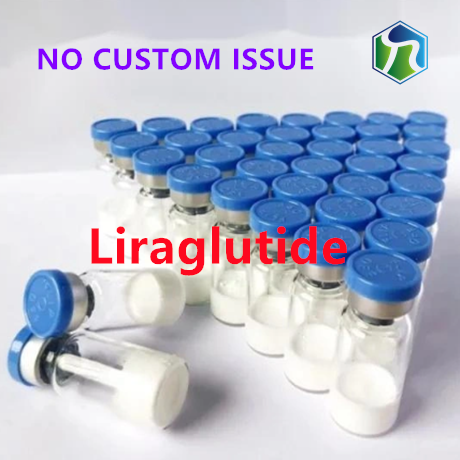
- +86-13363869198
- weimiaohb@126.com

Nov . 19, 2024 14:08 Back to list
Procaine Hydrochloride Overview and Applications in Medicine and Dentistry
Procaine HCl A Comprehensive Overview
Procaine hydrochloride (commonly known as procaine HCl) is a local anesthetic that has played a significant role in medicine since its introduction in the early 20th century. Recognized by its Chemical Abstracts Service (CAS) number 59-46-1, procaine belongs to the amino ester class of local anesthetics. This article delves into the pharmacological characteristics, clinical applications, side effects, and the evolving landscape of procaine HCl in medical practice.
Pharmacological Characteristics
Procaine HCl is chemically structured as an aromatic ester and is typically administered via injection. Its local anesthetic properties are a result of its ability to block sodium channels in nerve membranes, thereby preventing the conduction of nerve impulses. When procaine is injected into tissue, it provides localized pain relief by inhibiting sensory nerve conduction. The onset of action usually occurs within 5 to 15 minutes, and its effects can last for about 30 to 90 minutes, depending on the dosage and the specific area of injection.
One of the significant advantages of procaine is its relatively low toxicity compared to other local anesthetics. It has a favorable safety profile, making it suitable for a variety of applications, particularly in outpatient settings. Furthermore, procaine is often used in combination with a vasoconstrictor such as epinephrine to prolong its anesthetic effects and minimize bleeding in surgical procedures.
Clinical Applications
Procaine HCl is most commonly utilized for dental procedures, minor surgical interventions, and diagnostic procedures that require localized anesthesia. In dental practice, procaine is often used for tooth extractions and other types of dental surgery where pain management is crucial. Its ability to provide effective and quick pain relief has positioned procaine as a staple in dental anesthetics.
Beyond dentistry, procaine HCl has also found applications in the treatment of chronic pain conditions, such as myofascial pain syndrome. It is sometimes used in pain management protocols as part of a multimodal approach, delivering pain relief when traditional analgesics may not be effective. Additionally, procaine's historical use extends to treatments for conditions like rheumatic diseases, where it has been used to alleviate pain and inflammation.
procaine hcl cas 59-46-1

Another intriguing aspect of procaine is its potential benefits in complementary therapies. Some practitioners in holistic medicine advocate for its use in conjunction with therapies like neural therapy, which proposes a rebalancing of the autonomic nervous system. This usage, while somewhat controversial, reflects the broader trend of integrating traditional and alternative medicine approaches.
Side Effects and Precautions
While procaine HCl is generally well-tolerated, it is not without its side effects. Common adverse reactions include temporary swelling or redness at the injection site, dizziness, and, in rare cases, allergic reactions. Severe side effects, such as systemic toxicity, are uncommon but can occur, particularly with improper dosing or administration in unintended areas. Symptoms of systemic toxicity may include cardiovascular changes, seizures, or respiratory distress. It is crucial for healthcare professionals to administer procaine with caution, taking into account the patient’s medical history and any known allergies.
The Evolving Landscape
In recent years, the landscape of local anesthetics has evolved, with newer agents being developed that offer longer duration of action or different mechanisms of action. While agents like lidocaine or articaine have gained popularity, procaine remains an essential option in certain contexts. Research into the comparative efficacy of various local anesthetics continues to inform best practices in pain management.
Furthermore, the therapeutic potential of procaine is being explored in areas outside local anesthesia, such as its roles in stem cell therapy and regenerative medicine. As science evolves, it will be critical to assess the benefits and risks associated with such applications.
In conclusion, procaine HCl, with its long history and established efficacy, continues to be an important tool in the anesthetic arsenal. Its unique properties, coupled with ongoing research into its applications, suggest that procaine will remain relevant in both traditional and innovative medical practices. As medical professionals and researchers continue to explore the potential of this local anesthetic, it is clear that procaine HCl is far more than just a foundational anesthetic; it is an integral component of modern medicine that bridges the gap between traditional practices and emerging therapies.
-
High Quality SGT-163 CAS 1099-87-2 Supplier & Factory Reliable SGT-163 Manufacturer
NewsJun.10,2025
-
High Quality 3-Chloropyridine CAS 626-60-8 - Reliable Factories & Suppliers
NewsJun.10,2025
-
CAS 157115-85-0 Bulk Suppliers - High Purity & Low Prices
NewsJun.10,2025
-
High Purity PMK Ethyl Glycidate Manufacturer 99% Quality Supply
NewsJun.10,2025
-
Pure CAS 57-85-2 Testosterone Propionate Pharma Grade Supplier
NewsJun.09,2025
-
Premium Tadalafil CAS 171596-29-5 Suppliers & Factories
NewsJun.09,2025